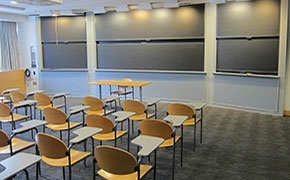Instructor Insights pages are part of the OCW Educator initiative, which seeks to enhance the value of OCW for educators.
Course Overview
This page focuses on the course 21W.035 Science Writing and New Media: Communicating Science to the Public as it was taught by Jared Berezin in Fall 2016.
This course provides an introduction to writing about science for general readers. Students read works by accomplished science writers. Each assignment focuses on a different popular form, such as news articles, interviews, essays, and short features.
Course Outcomes
Course Goals for Students
- Improve our rhetorical knowledge
- Develop strategies for succeeding in a variety of communication events (known as “rhetorical situations”)
- Gain experience in generating and researching article ideas, interviewing scientists, and most importantly, translating complex scientific and technological developments into clear and engaging stories for the public
- Gain the confidence to participate in and lead discussions that closely examine articles written for the public
- Ultimately improve our writing, speaking, and rhetorical knowledge that will help us succeed at MIT and beyond
I encourage everyone to explore the familiar and/or unfamiliar – whatever they find “awesome” and “awesomely confusing” in the world of science and technology.
—Jared Berezin
In the following pages, Jared Berezin describes various aspects of how he taught 21W.035 Science Writing and New Media: Communicating Science to the Public.
- Facilitating Peer-Review Workshops
- Learning Actively through Communication Experiments
- Course Iteration
Curriculum Information
Prerequisites
None
Requirements Satisfied
- CI-HW

- HASS-H

Offered
Every fall and spring semester
Assessment
Grade Breakdown
The students' grades were based on the following activities:
 15% Participation
15% ParticipationInstructor Insights on Assessment
Commenting on papers is an important form of teaching in any writing class. One guiding principle for my in-text comments is the effort to remain global, rather than local. Specifically, I attempt to give straightforward feedback that connects well-defined moments in the text to a larger overarching issue(s) discussed in class – elements of the rhetorical situation, attempts at creative explanation, and rhetorical appeals. In addition to critiquing writing that can be more effective, I also make it a point to praise effective moments in student writing, so that students become aware of their burgeoning strengths as translators and communicators of science, while working to improve in other areas.
Student Information

Breakdown by Year
Mostly first-year students
Breakdown by Major
Most students have not yet identified a major.
Typical Student Background
The benefit of having a majority of first-year students is that they have not yet selected a major, so they are not self-tethered to pursue a narrow course of study. Most of them are trying to figure out what they want to major in at MIT, which creates a classroom with wonderful diversity of passion and curiosity.
For every major assignment (except the rhetorical analysis) students are able to select their own article topics. I encourage everyone to explore the familiar and/or unfamiliar – whatever they find “awesome” and “awesomely confusing” in the world of science and technology. First-year students often welcome the opportunity to gain exposure to new fields, while sophomores tend to dig deeper into their main course of study (most of them know what their major will be), though some explore interests that they would otherwise not delve into in their academic career at MIT. This exploration is evident in the variety of article topics, which makes the articles stimulating to read for both the instructor and students in the class.
During an average week, students were expected to spend 12 hours on the course, roughly divided as follows:
In Class
- Met 2 times per week for 1.5 hours per session; 27 sessions total; mandatory attendance.
- During most class sessions, students participated in individual and group “communication experiments” designed to actively engage students in making and analyzing rhetorical choices.
- Several class sessions included student presentations.
- During two class sessions, students participated in peer-review workshops.
Out of Class
Students wrote responses to assigned readings and wrote multiple drafts of an investigative research article. They also completed a rhetorical analysis of a news article and other assignments.
Semester Breakdown
| WEEK | M | T | W | Th | F |
|---|---|---|---|---|---|
| 1 |  |  |  |  |  |
| 2 |  |  |  |  |  |
| 3 |  |  |  |  |  |
| 4 |  |  |  |  |  |
| 5 |  |  |  |  |  |
| 6 |  |  |  |  |  |
| 7 |  |  |  |  |  |
| 8 |  |  |  |  |  |
| 9 |  |  |  |  |  |
| 10 |  |  |  |  |  |
| 11 |  |  |  |  |  |
| 12 |  |  |  |  |  |
| 13 |  |  |  |  |  |
| 14 |  |  |  |  |  |
| 15 |  |  |  |  |  |
| 16 |  |  |  |  |  |
 No classes throughout MIT
No classes throughout MIT Lecture session
Lecture session Student Presentations
Student Presentations Assignment due date
Assignment due date No class session scheduled
No class session scheduled Field trip
Field trip Peer-review workshop
Peer-review workshop Library session
Library session

 Room 1 of 1
Room 1 of 1 